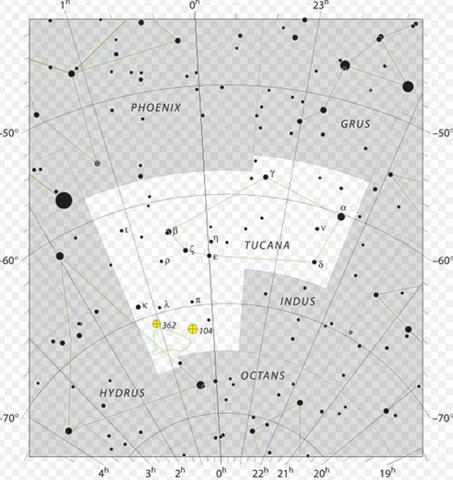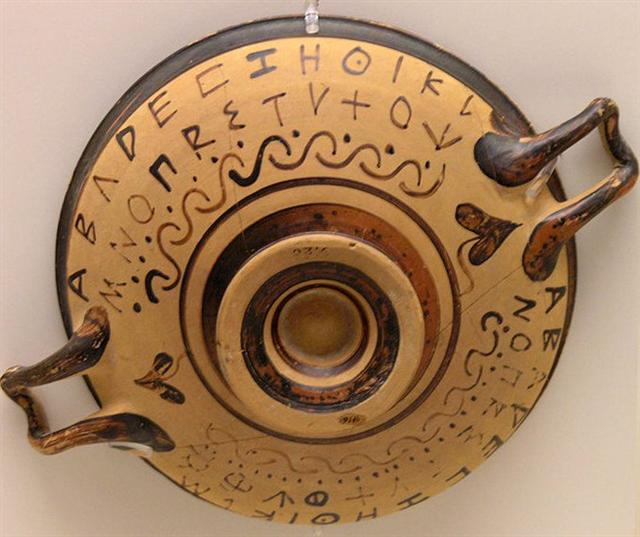According to the picture of Hevelius the Eridanus River seems to be born not from the Phoenix but from the Toucan and I have no stars listed from that constellation. This should now be remedied. 
The point of the
reversed Toucan's beak is
α, not far
beyond 22h, and
Tucana lies
right across 0h.
She has 13
stars with Greek
letters:
The last of these 13 is κ, not ω. Somewhere I have read a suggestion that the word 'element' (for instance in Euclid's Elementa) may have originated from an ancient alphabet (A, B) which began with the letters L, M, and N. I think this idea is wrong. Instead the origin of the set of letters ought to have been closely connected with the phases of the Moon. Thus there should have been a division of the ancient 'alphabets' into pairs of halves ('waxing' and 'waning'). The first such half could begin with α and end with κ (or their equivalents). The strange and hard to grasp closeness between the beginning (α) and the end (ω) of a cycle will then disappear into thin air. There are 2 cycles in the completed whole and when the last element in the first cycle has ended the first element in the second cycle will begin (instead of mysteriously leaping back to the beginning of the first cycle). When Sun has just set it will not immediately be dawn again. The end of the Toucan is the star κ adjacent to α Eridani. The 2nd cycle goes on in the River.
Counting from A to K we will reach 11. Then follows L and a jump to the beginning of the next line where M becomes 12. But as we are counting ordinal time number 11 at L means we are at the beginning of the 12th hour. There are 22 letters in all which means (1 + 11) + (1 + 11) = 24 'hours'. 22 letters indicate the completion of 2 π-cycles. A reflection around such ideas may have put Sadalmelik (The Luck of the King) at 22h:
February 19 is Gregorian day 50 and 50 * 3.14 = 157 (half π). |


